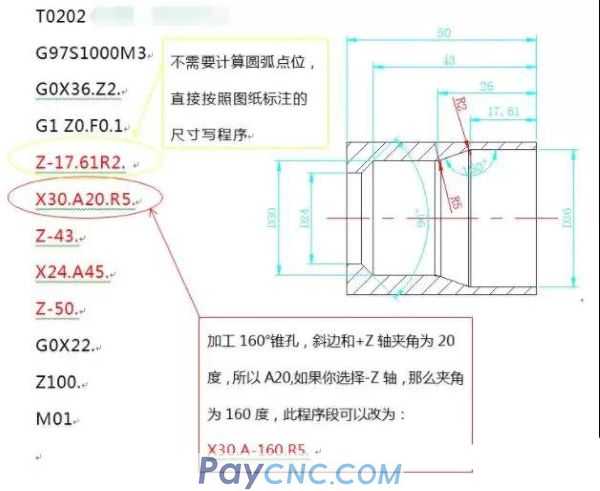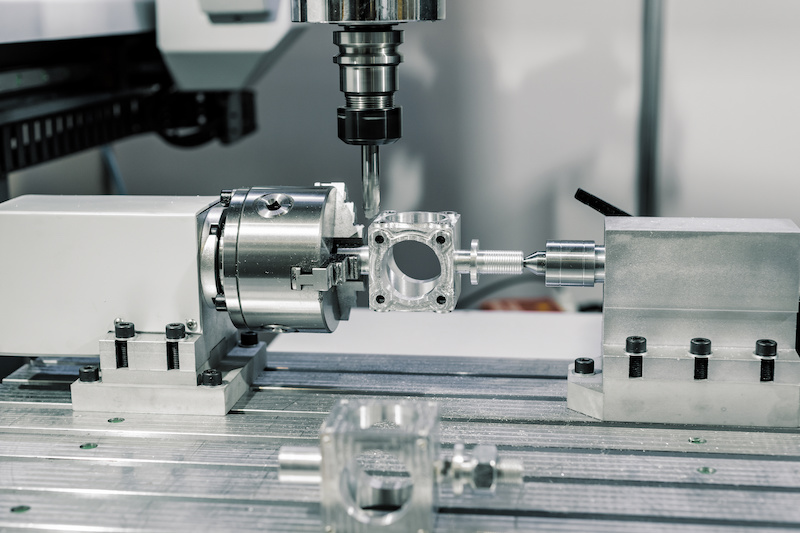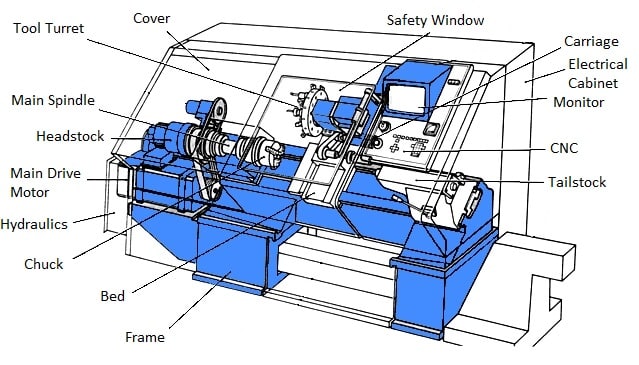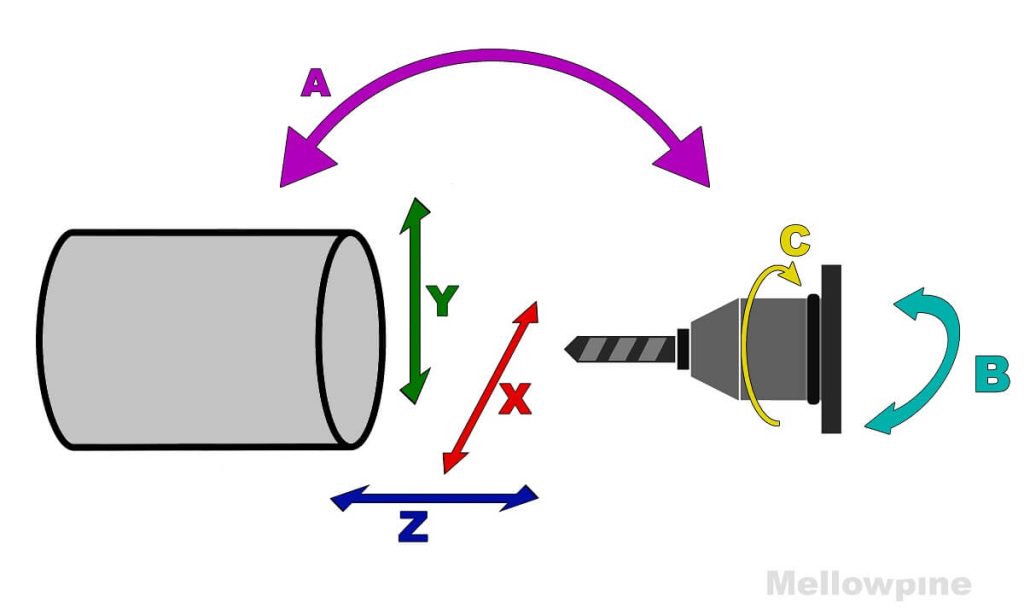Table of Contents
Programming a CNC lathe can be a daunting task, especially when it comes to programming chamfers. However, with the right tools and techniques, you can easily program a chamfer on your CNC lathe and achieve accurate and precise results.
In this article, we will guide you through the step-by-step process of programming a chamfer on a CNC lathe. We will cover the basics of CNC programming, the different types of chamfers, and the tools and software you will need to get started. By the end of this article, you will have the knowledge and skills to program a chamfer on your CNC lathe with ease.
- Start by selecting the appropriate tool for the chamfer.
- Enter the chamfer angle into the machine’s programming software.
- Specify the depth and width of the chamfer.
- Set the starting point and ending point of the chamfer on the workpiece.
- Verify the program and run the CNC lathe.
How to Program a Chamfer on a CNC Lathe?
Programming a chamfer on a CNC lathe is an essential skill that every CNC operator must learn. A chamfer is a beveled edge on the end of a workpiece that is used to make it easier to insert into a hole or to provide a decorative edge. This article will guide you through the steps to program a chamfer on a CNC lathe.
Understanding the Basics of Chamfer Programming
The first step in programming a chamfer on a CNC lathe is to understand the basics of chamfer programming. A chamfer can be programmed using either G-code or M-code. G-code is used to define the cutting tool’s path, while M-code is used to control the machine’s functions.
To program a chamfer using G-code, you need to specify the chamfer’s start and end points, the chamfer angle, and the chamfer depth. You also need to specify the cutting tool’s diameter and the cutting speed.
To program a chamfer using M-code, you need to specify the chamfer’s start and end points, the chamfer angle, and the chamfer depth. You also need to specify the cutting tool’s diameter, the cutting speed, and the coolant flow rate.
Programming a Chamfer Using G-Code
Programming a chamfer using G-code involves the following steps:
Step 1: Set the tool to the start position.
Step 2: Set the chamfer angle using the G code.
Step 3: Set the chamfer depth using the G code.
Step 4: Specify the cutting tool’s diameter and the cutting speed using the G code.
Step 5: Move the tool to the chamfer’s start point.
Step 6: Start the cutting process.
Step 7: Move the tool to the chamfer’s end point.
Step 8: Stop the cutting process.
Step 9: Return the tool to the start position.
Step 10: Turn off the machine.
Programming a Chamfer Using M-Code
Programming a chamfer using M-code involves the following steps:
Step 1: Set the tool to the start position.
Step 2: Set the chamfer angle using the M code.
Step 3: Set the chamfer depth using the M code.
Step 4: Specify the cutting tool’s diameter and the cutting speed using the M code.
Step 5: Specify the coolant flow rate using the M code.
Step 6: Move the tool to the chamfer’s start point.
Step 7: Start the cutting process.
Step 8: Move the tool to the chamfer’s end point.
Step 9: Stop the cutting process.
Step 10: Return the tool to the start position.
Benefits of Programming a Chamfer on a CNC Lathe
Programming a chamfer on a CNC lathe has several benefits. Firstly, it improves the accuracy and consistency of the chamfer. By programming the chamfer, you can ensure that every workpiece has the same chamfer angle and depth, which is not possible when doing it manually.
Secondly, programming a chamfer saves time and effort. It eliminates the need for manual labor, which can be time-consuming and tiring. It also reduces the risk of errors, which can lead to wastage of time and material.
Lastly, programming a chamfer allows for greater precision and flexibility. You can adjust the chamfer angle and depth as per your requirements, which is not possible when doing it manually. It also allows for more intricate designs and patterns, which can enhance the workpiece’s aesthetics.
Chamfer Programming Vs Manual Chamfering
Programming a chamfer on a CNC lathe is far superior to manual chamfering. Manual chamfering is time-consuming, labor-intensive, and prone to errors. It also lacks precision and flexibility, which can limit the workpiece’s design and aesthetics.
On the other hand, programming a chamfer on a CNC lathe is fast, accurate, and flexible. It eliminates the need for manual labor, reduces the risk of errors, and allows for greater precision and flexibility. It also allows for more intricate designs and patterns, which can enhance the workpiece’s aesthetics.
Conclusion
Programming a chamfer on a CNC lathe is an essential skill that every CNC operator must learn. It improves the accuracy and consistency of the chamfer, saves time and effort, and allows for greater precision and flexibility. By following the steps outlined in this article, you can easily program a chamfer on a CNC lathe and take your machining skills to the next level.
Frequently Asked Questions
Programming a chamfer on a CNC lathe can be a challenging task for beginners. However, once you get the hang of it, it becomes a relatively easy task. Here are some frequently asked questions and answers regarding programming a chamfer on a CNC lathe.
What is a Chamfer on a CNC Lathe?
A chamfer is a beveled edge that is cut into a workpiece to reduce the sharpness of an edge or corner. It is generally used to make parts more comfortable to handle and to improve their appearance. Chamfers can be programmed on a CNC lathe using G-code, which is a programming language used to control CNC machines.
To program a chamfer on a CNC lathe, you need to use the G01 command, which is used to make a linear movement. You also need to specify the depth and angle of the chamfer you want to cut, as well as the start and end points of the cut.
How Do I Program a Chamfer on a CNC Lathe?
To program a chamfer on a CNC lathe, you need to start by selecting the tool you want to use and setting its position. You then need to use the G01 command to make a linear movement to the start point of the chamfer. Once you reach the start point, you need to use the G02 or G03 command to make a circular movement to cut the chamfer.
The G02 and G03 commands are used to make clockwise or counterclockwise circular movements, respectively. You also need to specify the end point of the chamfer and the depth and angle of the cut. Once you have programmed the chamfer, you can run the program and check the results on the workpiece.
What is the Difference Between an Inside and Outside Chamfer?
An inside chamfer is cut on the inside edge of a workpiece, while an outside chamfer is cut on the outside edge. Inside chamfers are generally used to remove sharp edges on the inside of a hole or opening, while outside chamfers are used to remove sharp edges on the outside of a workpiece.
To program an inside chamfer, you need to use the G01 command to move the tool to the inside edge of the workpiece and then use the G02 or G03 command to cut the chamfer in a circular motion. To program an outside chamfer, you need to use the G01 command to move the tool to the outside edge of the workpiece and then use the G02 or G03 command to cut the chamfer in a circular motion.
What are the Benefits of Using Chamfers?
Chamfers offer several benefits when used on workpieces. First, they help to reduce the sharpness of edges and corners, making parts more comfortable to handle. Second, chamfers can improve the appearance of parts by giving them a more polished and professional look. Finally, chamfers can make it easier to assemble parts by providing a smooth and flat surface for mating surfaces to come together.
By using chamfers in your design, you can improve the quality and functionality of your parts, which can lead to better overall performance and customer satisfaction.
How Do I Check the Quality of a Chamfer?
To check the quality of a chamfer, you need to inspect the workpiece after it has been cut. You should look for smooth edges that are free from burrs or rough spots. You should also measure the depth and angle of the chamfer to ensure that it meets the required specifications.
If you find any issues with the chamfer, you may need to adjust your programming or make changes to the tooling. It is important to test and validate your chamfer program before running it on a production part to ensure that you get the desired results.
In conclusion, programming a chamfer on a CNC lathe can seem daunting at first, but with the right approach and knowledge, it can be accomplished with ease. By following the steps outlined above, you can create precise chamfers that meet your specifications and requirements.
Remember to always check your work before running the program to avoid errors or damage to the workpiece. With practice and patience, you can become proficient in programming chamfers on a CNC lathe and take your machining skills to the next level.
In the end, programming a chamfer on a CNC lathe is an essential skill for any machinist, and mastering it can lead to increased efficiency, accuracy, and productivity in your work. So, don’t be afraid to experiment and try new techniques, and most importantly, have fun while learning and improving your skills.
Request a quote today!
[contact-form-7 id="1578" title="Contact form"]
Please compress the file into a ZIP or RAR file before uploading. Alternatively, send through your RFQ by email.
enquires@unitymanufacture.com





